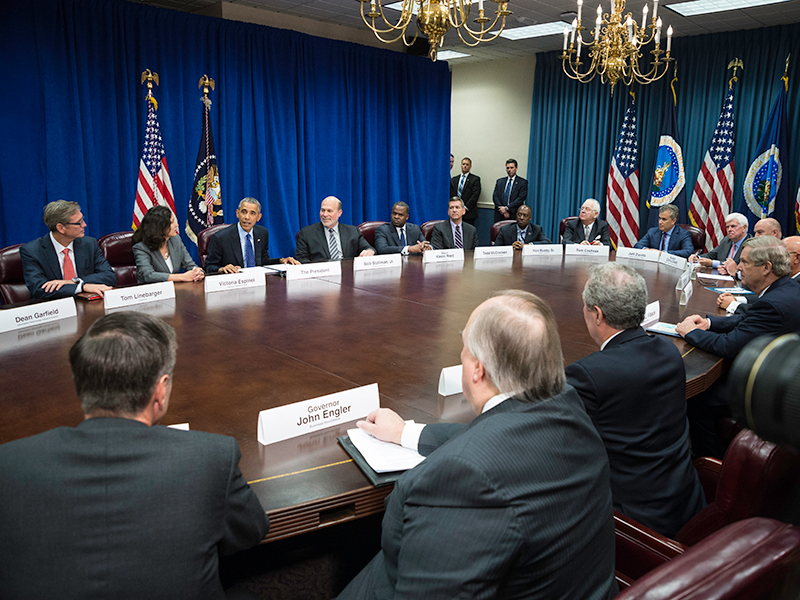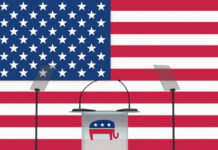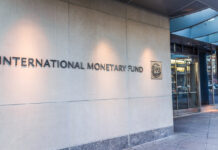How free is the Trans-Pacific Partnership? Covering a region spanning 40 percent of the world’s GDP and 12 signatory states, an argument can be made that the process of its negotiations and its commercial nature serves the corporate rationale rather than the public interest. Its potential impacts in areas such as intellectual property, medicines, labour standards and the environment are potentially wide reaching.
“We have the chance to open up more markets to goods and services backed by three proud words: Made in America.” – President Barack Obama, Feb 18, 2015
The Trans-Pacific Partnership Agreement (TPP for short), has been celebrated by the managerial and technocratic classes with pious conviction. Delegates from twelve countries present at the Atlanta round of talks for the Trans Pacific Partnership Agreement reached an agreement in October. On February 4, 2016, respective delegates from the twelve states converged on Auckland in New Zealand to formally sign the agreement.
Secret during the entire phase of negotiations, it has only been the workings of WikiLeaks and a range of other civic groups that has enabled citizens to get a glimpse about its implications prior to signature.1
The TPP is a highly problematic document on several levels. While it has been reported that China “cautiously” welcomes the agreement, there is little doubt that it has been shaped as a form of financial weaponry against the giants of the Asia-Pacific. This conforms to a broader trend. Towards Russia, there is the Trans Atlantic Investment Agreement, framed to incorporate the European Union. Following that is the enveloping Trade Services Agreement. All three, touted as free trade devices, are actually financial instruments of control.
Wealth and astrology
The chatter in advance of the agreement was filled with astrological predictions about wealth creation. Optimistic sentiment trumped empirical arguments. The benefits of free trade have, in fact, been highly uneven, in some cases proving disastrous to local industries. Offshoring and penetration by foreign transnational companies at the expense of government control has been the norm, a situation that has compromised both sovereignty and the representative function of state officials. Local labour forces are reconstituted, a euphemistic way of describing job flight, with labour skirting away to cheaper sources of production.
The observation by businessman and former US presidential candidate Ross Perot about the “sucking sound” of jobs from the United States if such agreements were implemented is still pertinent. The difference in the case of the TPP is that the scope of effect will be greater than any previous regional agreement.
Despite this, political figures in each of the twelve states have extolled the benefits of a complex trade agreement that is but one step in a more global system of financial and corporate reform. President Barack Obama would have us believe that the agreement is a brilliant contribution to labour standards, serving to harmonise and remove discrepancies. “The TPP,” tweeted the President, “establishes the highest labour standards of any trade agreement in history.”
US Trade Representative Michael Froman similarly claimed on the release of the text that the agreement “will position Americans to compete and win in tomorrow’s global economy.” Much of this extols the Obama line that involves “middle-class economics – the idea that the country does best when everybody has got a fair shot, everybody is doing their fair share, everybody is playing by the same rules.”
A series of unverified numbers are suggested: the elimination of 18,000 individual taxes on US products, to take one example, and the obsession with “made-in-USA”. This says nothing about translating the matter into actual, direct employment to US employees, nor does it bode well for the other signatory states and their labour forces.
Obama’s confidence on labour harmonisation is misplaced, given the supposedly temporary tolerance of some signatories who have made it clear that they would only sign up on the basis of a dispensation. States such as Vietnam have a five-year pass on the issue of implementing complimentary labour standards. Given that there are also vast differences in the basic minimum wage in Vietnam, the notion that US, Australian or Canadian workers would be in an equal position of competition is patent nonsense. Company movement to such areas of cheaper labour, with fewer protections, is a likely prospect.
One case study acts as a counterpoint to the optimistic rhetoric about job creation. Australia’s gains from its own free trade agreement with the United States has been shown to be far better at producing losses than yielding gains. The pattern is familiar: predictions of growth and obscure references to benefits despite incompetent analysis and an inability to describe “the national interest”.2 US negotiators, however, knew exactly what they wanted on that score.
Analysis conducted on the implications of the AUSFTA by the Australian National University in 2015 suggest that both Australia and the United States actually reduced their trade with the rest of the world by a staggering $53 billion.3 Preferential treatment for US goods, services and investment seemed to have one notable effect: diverting trade away from more efficient and competitive suppliers.
Free trade, in this case, ceases to be truly free in encouraging a distinct lack of competition, something that repeats itself in the intellectual property chapter of the TPP regarding patents and biologics. Graphs happily delved out by the White House promising a 48 percent increase of US exports within a time frame should be regarded with caution.
Even prior to the ill-tidings brought by AUSFTA, the United States was engaging in its own bit of free trade delusions with the North American Free Trade Agreement, an agreement driven by President Bill Clintont till it became law in 1993. While there are disagreements among economists over the consequences, a good number point to the evisceration of local manufacturing and a thriving US trade deficit.4 The economic stargazing Peterson Institute for International Economics (PIIE) had looked at a very different set of cards in the 1990s and saw a trade surplus with Mexico, and 170,000 new US jobs by 1995.5
It took two brief years to see a revised total of zero in terms of job growth. Mexico and Canada duly registered agricultural surpluses. US companies involved with food production and processing relocated operations to Mexico, which provided lower wages and higher returns.
Areas of influence
The other features of deceptive harmonising stem from the illusion that areas such as the environment are somehow protected by the agreement. In a distributed message, the Obama administration took the rather distasteful measure of claiming that the TPP agreement would actually combat wildlife trafficking, illegal logging and illegal fishing. It would make core “environmental protections” enforceable “through the same type of dispute settlement as other obligations.”6 A closer reading of what has been made available via Wikileaks and the full text itself suggests that the environment is set for a battering, a trade-off for solid corporate profits.
As Sierra Club executive director Michael Brune has argued, the TPP effectively empowers “big polluters to challenge climate change environmental safeguards in private trade courts and would expand trade in dangerous fossil fuels that would increase fracking and imperil our climate” (Salon, Oct 7, 2015).
In the case of the US, it is simply not clear whether the TPP Environment Chapter actually rolls back the May 2007 environmental standards Democrats in Congress impressed upon the Bush administration in making trade agreements. In the haggling, it was clear that several negotiating states, Malaysia foremost amongst them, were not happy to deal with the presence of various Multilateral Environmental Agreements that would have to be enforced. Watering down was inevitable.
Even more troubling for activist and civic groups in the TPP is the Intellectual Property portion of the agreement. As the Electronic Frontier Foundation noted, the IP chapter “confirms our worst fears about the agreement, and dashes few hopes we held out that its most onerous provisions wouldn’t survive to the end of the negotiations.”7
The draft chapters, and the final released text of the TPP, are highly problematic for the health systems of signatory states, with the text requiring parties to prevent generic biologic medicines (‘biosimilars’) from being made available to patients, even where there is no patent. TPP countries could either grant eight years of market exclusivity (or protection from competition) from the date of the biologic’s approval in the relevant state, or five years from the date of the biologic’s approval by that relevant state coupled with other measures to produce a comparable market outcome.8 US trade officials had been pressed by American biopharmaceutical companies for an even lengthier 12 year period of market exclusivity.9
Reduced then, to its barest form, only a few provisions identified by the EFF can be deemed to be less inhibitive than what was found in initial drafts. Extending copyright protections to “buffer” copies in a computer system was eventually dropped by the USTR. The parallel importation of cheaper versions of copyright works will be permitted, complemented by an express authorisation of devices that bypass regions (EFF, Oct 9, 2015).
Corporate protections
The TPP overwhelmingly privileges the corporate interests over that of the commonwealth in very specific ways. Non-government parties have been given a charter to sue signatory governments for diminished profits when faced with pernicious legislation, though the final agreement does limit the scope of, say, tobacco companies in suing for lost profits over enacted health policies.
From the start of the TPP, a broader agenda for the control of trade from Washington’s perspective was pushed. Obama has never shied away expressing fears that the Chinese economic juggernaut will, at some point, pry away American power, counting it among countries “that would like to take away America’s mantle of economic leadership.”10
Such parochialism finds expression in an email from the president to the White House email list in February 2015. “My top priority as President is making sure that more hardworking Americans have a chance to get ahead. That’s why we have to make sure the United States – and not countries like China – is the one writing this century’s rules for the world’s economy.”11z Never could a more startlingly direct statement on hegemony be stated.
Obama’s persistence on emphasising the sanctity of the US work force in the face of the global market is discordant: the policy of the boardroom tends to often cut through the politics of labour and parliamentary representation. In the face of such seemingly mindless optimism come starker realities. Wealth may well be created through such agreements, but it remains corporate, concentrated and distant. Those citizens who trudge on Main Street remain the squeezed, the patronised and the belittled. In all twelve countries, many will have reason to fear this theme of sovereign capitulation.
About the Author
![Kampmark_Picture[1]](https://www.worldfinancialreview.com/wp-content/uploads/2016/03/Kampmark_Picture1.jpg) Dr. Binoy Kampmark was a Commonwealth Scholar at Selwyn College, Cambridge. He is a Senior Lecturer at RMIT University, Melbourne.
Dr. Binoy Kampmark was a Commonwealth Scholar at Selwyn College, Cambridge. He is a Senior Lecturer at RMIT University, Melbourne.
Email: bkampmark@gmail.com
References
1. https://wikileaks.org/tpp-ip3/
2. http://www.aph.gov.au/binaries/senate/committee/freetrade_ctte/report/final/report.pdf
3. http://www.eastasiaforum.org/2015/02/08/the-costs-of-australias-free-trade-agreement-with-america/
4. http://www.citizen.org/documents/NAFTA-at-20.pdf
5. http://www.citizen.org/documents/NAFTAs-20-year-legacy.pdf
6. https://www.whitehouse.gov/the-press-office/2015/10/05/fact-sheet-how-trans-pacific-partnership-tpp-boosts-made-america-exports
7. https://www.eff.org/deeplinks/2015/10/final-leaked-tpp-text-all-we-feared
8. TPP Treaty, Intellectual Property Rights Chapter – Oct 5, 2015, QQ.E.20.1.a and QQ.E.20.1b.
9. Ruth Lopert, Why biologics were such a big deal in the Trans-Pacific Partnership,” The Conversation, Oct 6, 2015.
10. http://www.reuters.com/article/2015/01/21/us-usa-obama-trade-idUSKBN0KU0BE20150121
11. https://www.whitehouse.gov/blog/2015/02/18/president-obama-writing-rules-21st-century-trade




































































